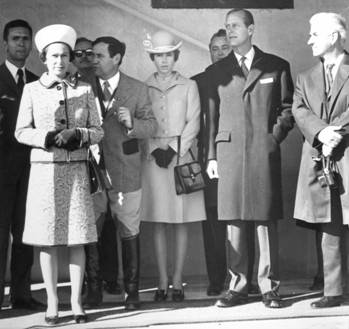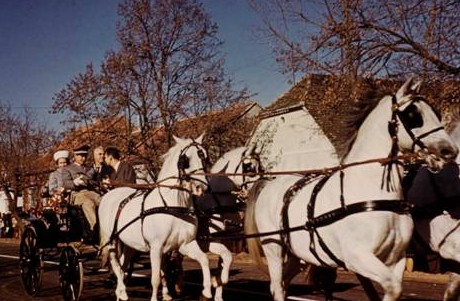Prince Philip and the Baska tablet
When Britain's Queen Elisabeth II and Prince Philip paid a visit to Zagreb in 1972, they were invited to see the Gallery of the Yugoslav (now Croatian) Academy of Sciences and Arts. According to protocol, the visit was to last no more than 15 minutes. While leaving the main entrance hall, Prince Phillip (about 2m tall), surrounded by many people, accidentally turned his head, and noticed the huge Baska tablet (800 kg), exhibited in the Academy as one of the most important Croatian cultural monuments. The Prince, led by Academician Grga Novak, and accompanied by a long cortege of the diplomats and representatives of Yugoslav culture and politics of the day, approached this innocent monument, and asked: "What is this?" By the time scholars finally satisfied His Royal Highness's famous curiosity, protocol was in complete havoc.
Information supplied by Academician Petar Strcic, witness to this event, director of the Archives of the Croatian Academy of Sciences and Arts.
In addition, we might mention Mateja Matejic, Professor Emeritus of Ohio State University, in Columbus, Ohio, USA, who was to state in his lectures and books that the Baska tablet represents - a Serbian cultural monument! When he was once asked by an outstanding Croatian specialist of international reputation Eduard Hercigonja, how he could claim this, he answered with a further gross indirection: "Serbian is an abbreviation for Serbo-Croatian."

Queen Elisabeth II, Prince Philip, and Princess Margaret during their stay in Croatia in 1972 also visited the town of Djakovo. The Djakovo stud, mentioned for the first time in 1506, is among the oldest in Europe.

Photos from CROWN
Back to Croatian glagolitic
